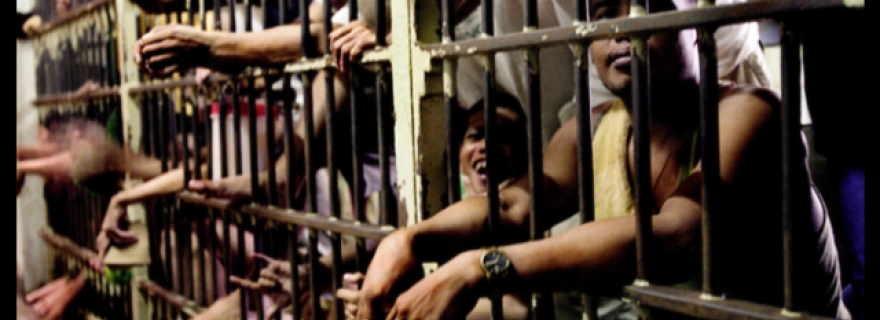Jailhouse Islam – What to do with terrorists in prison?
Radicalization in prison ranks high on Europe’s political agenda. Are prisons breeding grounds for radicalization? What to do with terrorists in prison?
Radicalization in prison ranks high on Europe’s political agenda. A growing number of young Muslims have been arrested over the last years, suspected of preparing terrorist attacks or recruiting others to join IS in Syria and Iraq. One of the Kouachi-brothers – the perpetrators of the Charlie Hebdo attacks – as well as Amédy Coulibaly – who staged the Jewish supermarket hostage taking the next day in Paris in January this year – were radicalized in prison. Are prisons breeding grounds for radicalization? Many countries struggle with the question: What to do with terrorists in prison?
One of the Paris attackers, Chérif Kaouchi, spent almost twenty months in Fleury-Mérogis prison, the French prison that has been described in the media as ‘Jailhouse Islam’. In an interview with the New York Times, one of the prison guards said:
“We are not really trained or prepared in any way to deal with religious radicalism […]. If we have such a hard time regulating something as simple as cigarettes, how do you expect us to regulate something as abstract as ideas, as religion?”
How big is the problem? Research into radicalization in prison shows that prisons are often seen as ‘universities of terror’ or ‘high schools for radicalization’, where terrorist organizations are actively seeking and recruiting new members. Against that backdrop it is understandable that many countries – in the management of their correctional facilities – maintain a ‘security first’ approach with a narrow focus on decreasing the potential threat from terrorism. As a result, none or very little attention is paid to the rehabilitation of prisoners and their reintegration into society upon release.
In the Netherlands, up to two years ago the prison regime for the terrorism wings was directed towards one goal: security. Isolating terrorist inmates from the rest of Dutch society was viewed as the main objective . With the relatively low numbers of terrorist prisoners in the Netherlands, concentration (locking up terrorist inmates together and isolating them from other detainees) seemingly provides a sensible solution. The main advantage is that it becomes much more difficult for terrorist detainees to spread radical propaganda throughout prison. However, research into the impact of the separate wings on terrorist inmates in the Netherlands shows that the risk of (further) radicalization may actually increase because of that regime. “Housing extremist prisoners together in restrictive security regimes may fuel frustration and anger among the inmates and their communities. It can also lead to stigmatization and contribute to post-release reintegration problems and radicalization”, says sociologist Tinka Veldhuis.
In the fight against prison radicalization, one of the main challenges is to distinguish between different types of terrorism, based on motivations. Are we talking about the ideologies, the leaders: then it makes sense to lock them up separately. But are we talking about followers or inmates with very different reasons for becoming terrorists (personal frustrations or the lust for adventure): they warrant a different approach. Over the last years we have seen a shift in thinking towards the realization that de-radicalization and reintegration of terrorist detainees ought to be an essential part of the security approach, as it decreases the risk of re-offending.
When integrating reintegration into the prison regime of this special population we need to realize that we should focus on more than just ideology. Knowing why people convert to radical and violent Islam or why they choose to join ISIS is the most important condition to reintegrate them successfully. Concentration of terrorist detainees – regardless of who they are – and unreasonably strict regimes are the first building blocks for our own ‘high schools of terrorism’.


